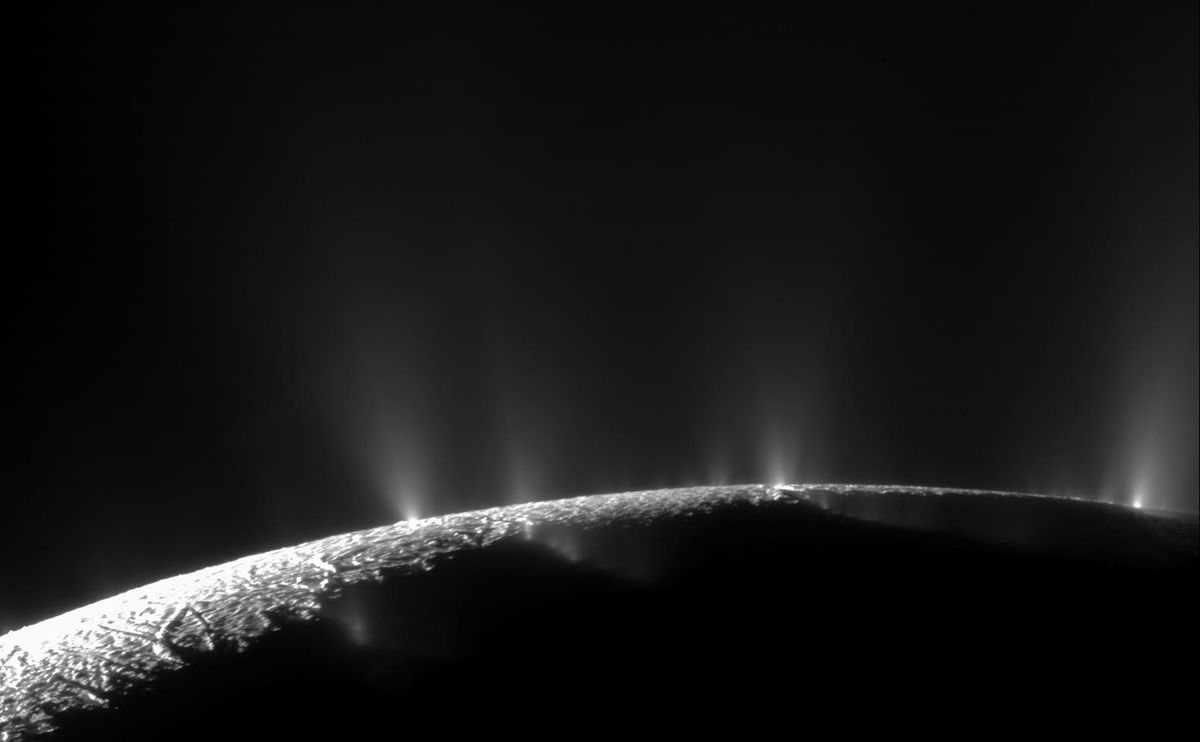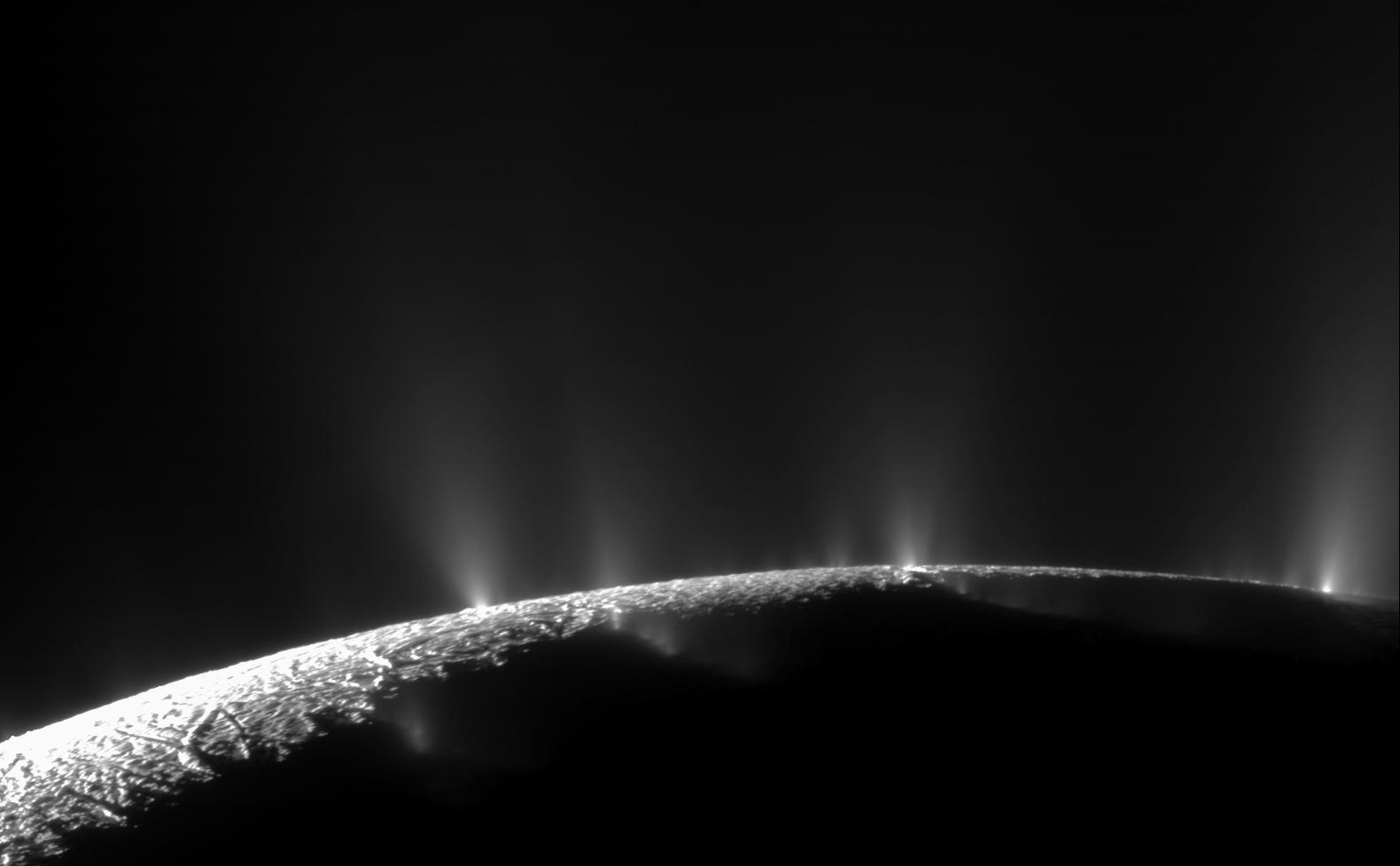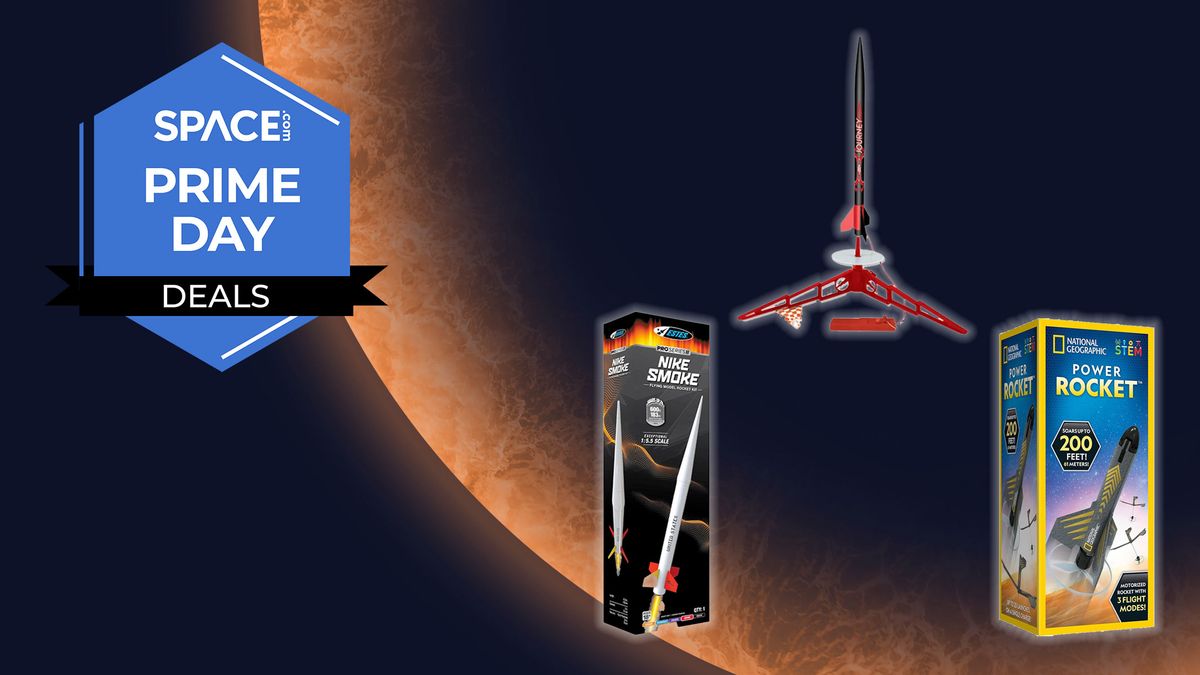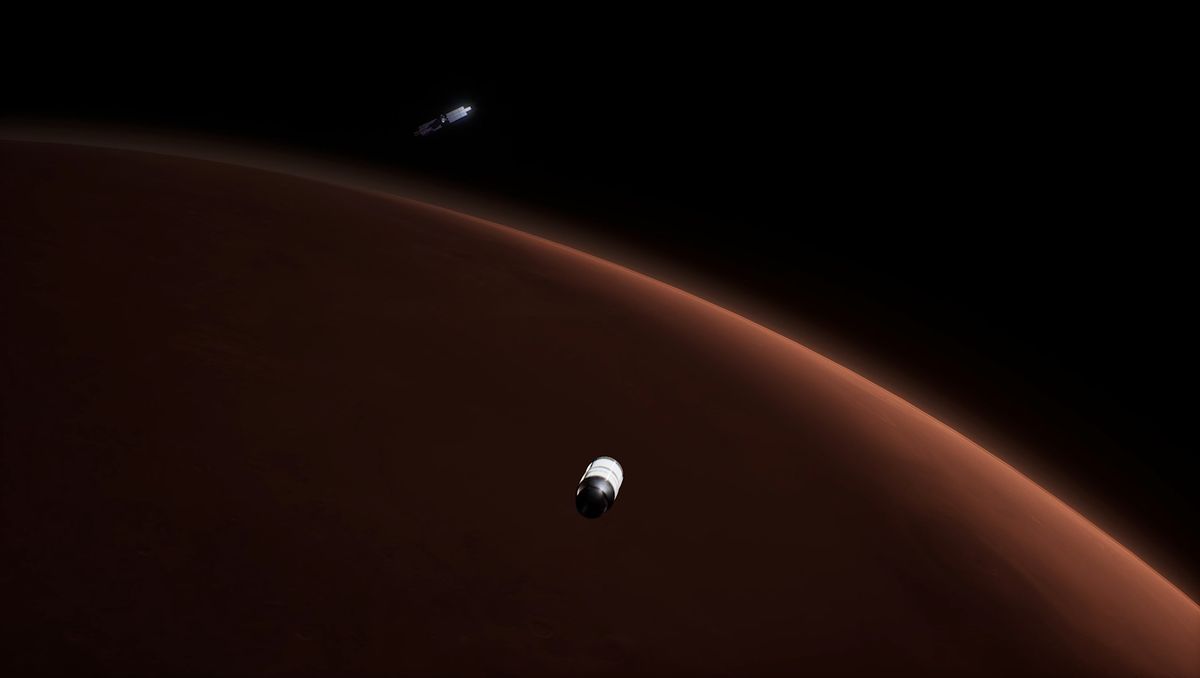NASA’s Cassini spacecraft has flown through the plumes of water vapor spewing out from the ocean inside Saturn’s moon Enceladus on multiple occasions, which has allowed researchers to determine the pH of the water, which is highly alkaline. From this, they have been able to predict the entire mineralogical composition of the ocean, finding that it has both good and bad points for any potential microbial life that may exist within it.
“It’s harder, but certainly not impossible, to live in these conditions,” Christopher Glein, an ocean worlds scientist at the Southwest Research Institute (SwRI) in San Antonio told Space.com.
Cassini discovered Enceladus’ plumes of water vapor, which jet out from large cracks in the icy surface called “tiger stripes” at the moon’s southern polar region, in 2005. Although the Cassini mission, which ended in a blaze of glory in September 2017 when the orbiter plunged into Saturn, was not designed to sample material from such plumes, two of its instruments, the Cosmic Dust Analyzer and the Ion and Neutral Mass Spectrometer, were able to at least get a taste of them during close flybys of the icy moon. What they found offered clues as to the contents of the ocean deep within Enceladus that feeds the plumes.
“The payoff from Cassini far exceeded what it was designed to accomplish,” said Glein. “We discovered a habitable ocean at Enceladus.”
Those measurements remain our best study so far of any of the ocean moons of the outer solar system, and through geochemical modeling scientists are able to draw some conclusions. New research — by Glein and his SwRI colleague, planetary archaeologist Ngoc Truong — has determined that the pH of the ocean beneath Enceladus’ ice is moderately high, between 10.1 and 11.6
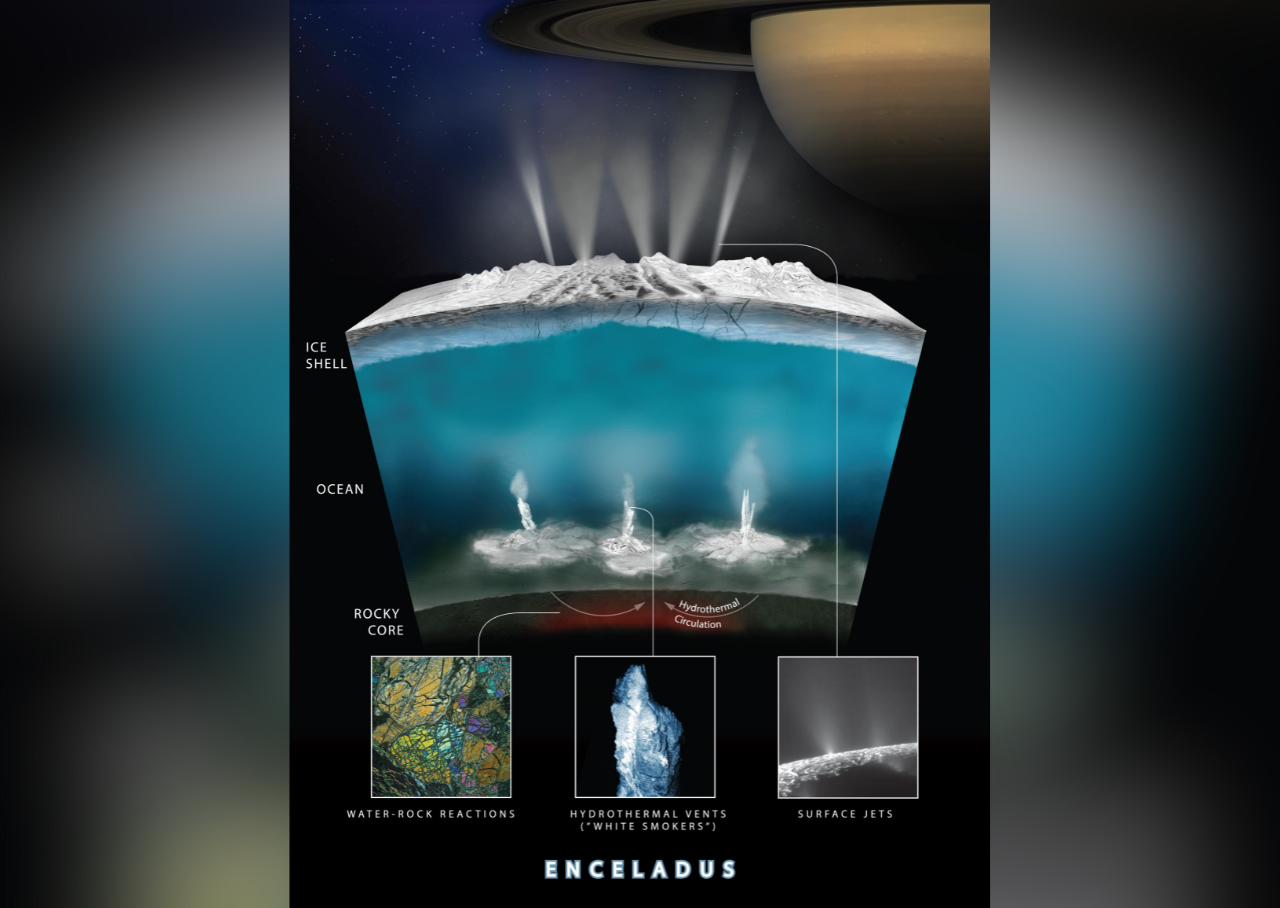
The pH scale is a measure of how acidic or alkaline something is, 1 being highly acidic, 14 being highly alkaline, and 7 being neutral. Hence Enceladus’ ocean is quite alkaline. For comparison, Earth’s ocean has a pH of about 8.
The researchers arrived at this conclusion by studying the abundance and distribution of phosphate minerals in the ice grains within the plumes, in particular the ratio of mono-hydrogen phosphate (HPO4) to regular phosphate (PO4), which is a direct indicator of the pH level of the water. The range of possible pH that Glein and Truong found is higher than the previous estimates of 8 to 9. However, those estimates were made before 2023, when further detailed analysis of Cassini’s data revealed high concentrations of phosphates in the plumes.
The alkalinity is a signature of interactions between water and iron-, magnesium- and sodium-bearing silicate rock on the ocean floor. These water-rock interactions release sodium hydroxide (NaOH) into the ocean that subsequently reacts with carbon dioxide and produces the high alkalinity.
“One consequence of these conditions is a high carbonate alkalinity, which supercharges the solubility of calcium phosphate minerals — like apatite. Your teeth might dissolve in Enceladus’ ocean,” said Glein.
Such high alkalinity would be somewhat challenging for life. “High pH tends to break apart biological polymers,” said Glein when asked by Space.com. “However, we know that some microbes on Earth can tolerate the range of pH found on Enceladus.”
These terrestrial, alkaline-loving microbes are extremophiles called alkaliphiles. And there’s another boost for the possibility of life in Enceladus’ ocean, since the water-rock interactions produce minerals and ions that can be used by microbial life for energy and sustenance. The conditions even provide clues as to where in the ocean we might find such life, should it exist there.
“Metals become less soluble at higher pH, so iron may be scarce in Enceladus’ ocean,” said Glein. “I think the best place to live would be at the seafloor. If you’re a microbe, you could directly ‘mine’ iron and other metals from minerals without relying on solubility. We might want to think about biofilms on Enceladus.”
Based on the alkalinity, the chemical composition of the plumes as measured by Cassini and the expected minimal outgassing of carbon dioxide from the ocean, Glein and Truong have assembled a list of minerals and molecules that we could expect to find in Enceladus’ ocean. The most abundant compounds on the list are sodium, chlorine, sodium carbonate, carbonate ions, ammonia and potassium ions.
“The composition does make sense for deep circulation of ocean water through the rocky core of Enceladus,” said Glein.
One surprise was the inferred high abundance of molecular hydrogen (H2). However, its concentration is similar to some deep-sea environments on Earth, such as the vast field of hydrothermal vents in iron-rich rocks called the “Lost City” deep in the Atlantic Ocean.
“There, H2 supports life by supplying a source of chemical energy,” said Glein.
Although the list of mineral constituents in the ocean is not confirmed — we’d have to return to Enceladus to do that — it just shows that we don’t need to venture into the depths of the dark water to learn the ocean’s secrets. Just flying through the plumes is enough to give us a good indication. Cassini did so without specialized equipment for analyzing molecules and compounds within the plumes, since when it was launched (October 1997) the plumes had not even been discovered. Glein thirsts to return with a dedicated mission carrying state-of-the-art instruments specifically designed for the job.
“Imagine what we could find,” he mused. “The picture for Enceladus is of an ocean that is intensely affected by water-rock interactions. Enceladus is a geochemical paradise!”
Glein and Truong’s findings were published online June 20 in the journal Icarus.




